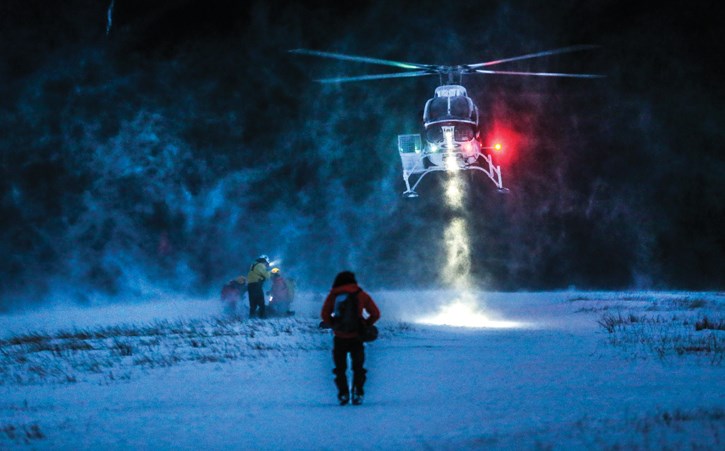BANFF – Parks Canada is bracing for a surge in new and inexperienced snowshoers and cross-country skiers seeking to be outside in the mountains during the COVID-19 pandemic this winter.
And to deal with this, public safety experts in Banff, Yoho and Kootenay national parks, are mounting a public education campaign of safety tips to help people avoid dangerous situations that could lead to serious injury – even death.
Public safety officials say rescue teams were kept busy this summer, often dealing with situations that could have been easily prevented, and they suspect this trend will continue into winter.
“We want to try and address this demographic and give them some tips and hints and safety messages that will hopefully prevent them from getting into trouble,” said visitor safety manager Brian Webster.
“We’re anticipating a big influx of these new and inexperienced users – snowshoers, cross-country skiers, even walkers – people that just want to get out into the mountains.”
Recently, a couple walked the 13-kilometre snow-covered road to Moraine Lake completely unprepared – wearing running shoes and without warm and waterproof jackets or pants.
“It’s almost dark and they’re soaking wet and they’re tired and they’re scared,” Webster said.
“Luckily, there was a phone booth there because there’s no cell service, and they called us and we went in and picked them up,” he added.
“But it could have been a lot worse. They could have spent the night out or gotten really cold – hyperthermic or even frost bite.”
To that end, Parks Canada advises people heading out on trails in the mountains to be prepared with proper footwear and clothing.
Webster said the temperature fluctuations throughout the day can be dramatic.
“It can be quite pleasant in the sun at the start of the day, and as the sun moves behind a cloud or behind the mountain, it suddenly gets really cold,” he said.
Another big difference between summer and winter is it gets dark much earlier –currently between 4:30 and 5 p.m.
Webster said that means it is very important for visitors to start their trip earlier in the day.
He urged people to be mindful of when they need to turn around, so they don’t get caught out in the dark.
“Another good tip, regardless of whether you’re expecting to be out at night – is to throw a headlamp in your pack,” he said. “Having a headlamp in the dark may mean the difference between getting out on your own, or having to call for help.”
Parks Canada also wants to remind people heading into the backcountry that cell service is limited outside the main Bow Valley – so have a satellite communication device such as a SPOT or inReach.
“I don’t think you have to go out and buy one if you’re just doing simple, small trips around Banff and Lake Louise,” Webster said.
“But don’t rely on your cellphone to call for help for longer or more serious trips into the backcountry.”
For those heading into the backcountry, Parks Canada has important safety messaging.
“You don’t have to travel very far to get into the backcountry, particularly around Lake Louise,” Webster said.
“In some areas we have signs warning of the avalanche zones, but in many areas we don’t.”
Webster said he suspects most of the new or inexperienced visitors wanting to snowshoe, walk or cross-country ski have no interest in heading into avalanche terrain, anyway.
“If you are uncertain where to go, then contact the visitor centre in Banff and Lake Louise to get advice on where to go, so you’re not inadvertently going into avalanche-prone terrain,” he said.
“Of course, if you are purposefully going into avalanche terrain to go backcountry skiing, then you can get current avalanche conditions from the public avalanche bulletins, through avalanche.ca.”
To help with a potential rescue operation, Webster said it is always vital that people leave word with friends or family on where they are heading, including the name of the trailhead and type of vehicle they’re driving.
“If you do get reported overdue, the first thing we’re going to do is check that trailhead and see if your vehicle is still there,” he said.
“If the person reporting you overdue doesn’t know where you’re parking, or doesn’t have a description of your vehicle, that’s not helpful for us and makes it a lot more difficult for us to action an overdue response.”



